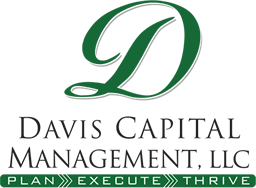
It can be tempting to use your 401(k) to cover costs from unexpected life events. However, withdrawing funds early from your 401(k) plan can lead to penalties or tax consequences if withdrawn before age 59 and ½. Understanding the in-service withdrawal rules for 401(k) plans can help prevent year-end surprises and give you the confidence to make a well-informed financial decision when needed most.
Tax Implications to Know
Funds generally grow tax-free in 401(k) plans until the money is withdrawn, typically at retirement age. Once the funds are removed, the IRS treats them as regular income and taxes them accordingly. Individuals should factor tax implications into their withdrawal by calculating the taxes owed versus the amount needed.
Plan holders should also take note of penalties that could increase the tax burden. For example, distributions made before the plan’s regular retirement age, often age 59 and ½, can result in a penalty of an additional 10% income tax on the distributed funds. For IRA retirement plans, distributions are considered early if taken before age 59 and ½ and can also result in a tax penalty.
In-Service Withdrawal Rules for 401(k) Plans: Hardship Distributions
Many 401(k) plans offer the ability to take a hardship distribution if there is an immediate heavy financial need. The funds withdrawn cannot exceed the amount necessary to satisfy the financial need, and the worker must show that they could not reasonably obtain the funds from other sources.
Hardship distributions are typically subject to regular income taxes and, if taken before the plan’s normal retirement age, can be subject to an additional 10% early withdrawal penalty. Plan holders should do their due diligence by researching their specific plan rules or contacting a financial planner prior to taking the funds, as hardship distributions cannot be repaid into the plan or rolled into an IRA.
Alternatives to In-Service Withdrawals
If you’re on the fence about taking an in-service withdrawal, there may be alternatives to cashing out your 401(k) plan. Some retirement plans allow plan holders to take a loan against their 401(k). Unlike a hardship distribution, retirement plan loans must be paid back with interest. However, most retirement plan loans aren’t taxed if the rules and repayment schedule are followed.
A financial planner can also help you take a practical look at your financial position to help you decide if your financial need can be relieved from other sources. Since hardship distributions often require plan holders to confirm their financial needs can’t be resolved by other sources, taking a hard look at available sources of income can help two-fold: locating an alternative source for the funds or confirming that all other sources have been exhausted.
Source:
irs.gov/newsroom/important-info-for-people-considering-making-early-withdraws-from-retirement-funds

